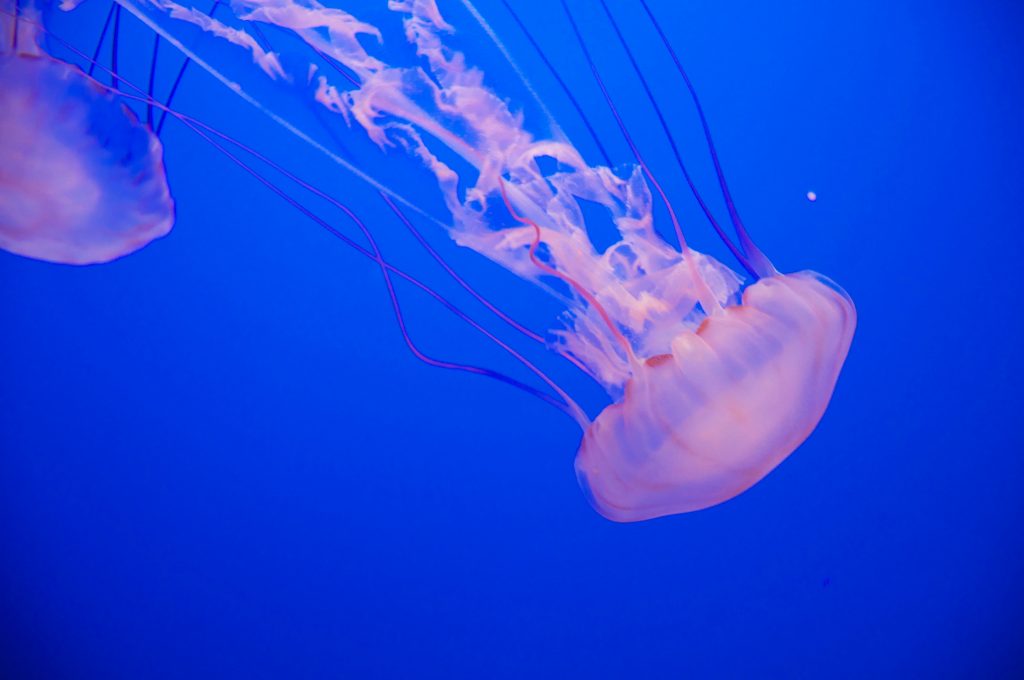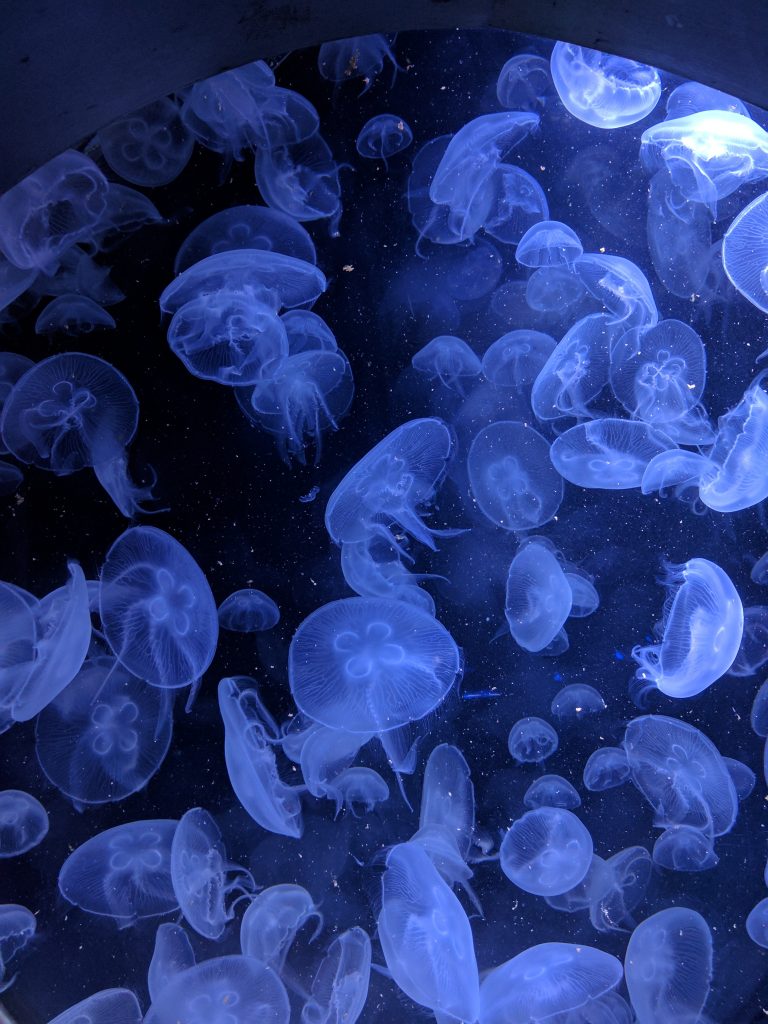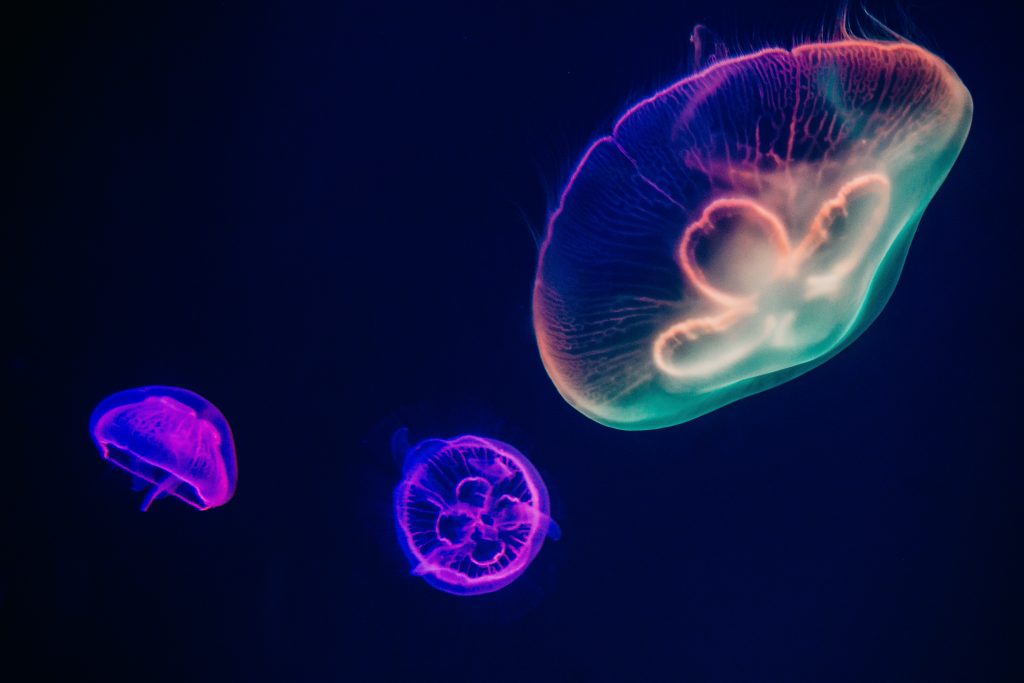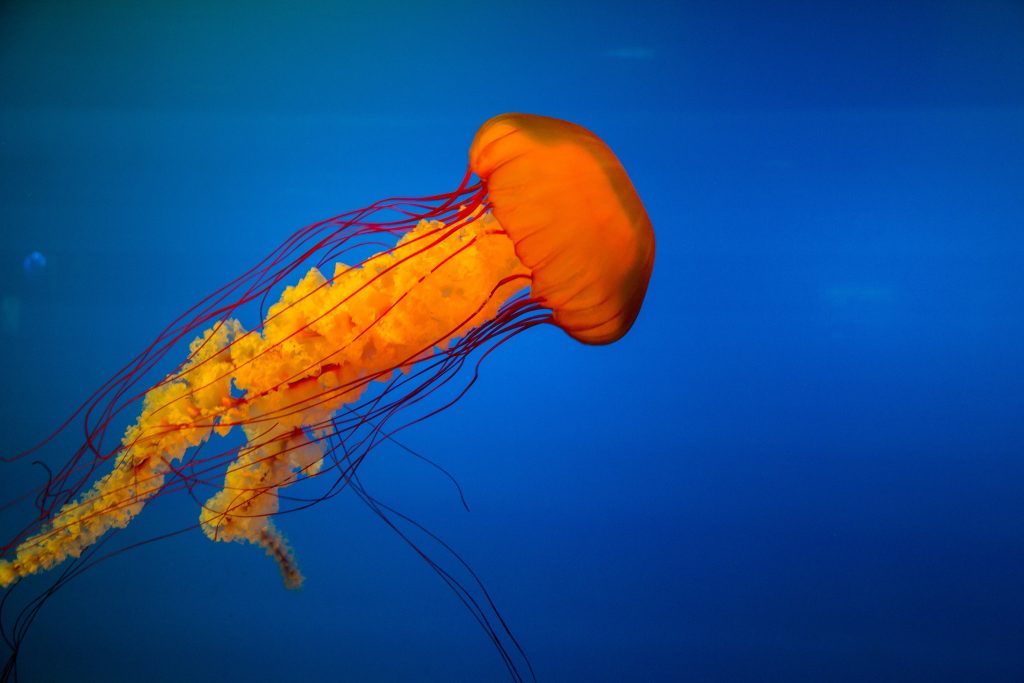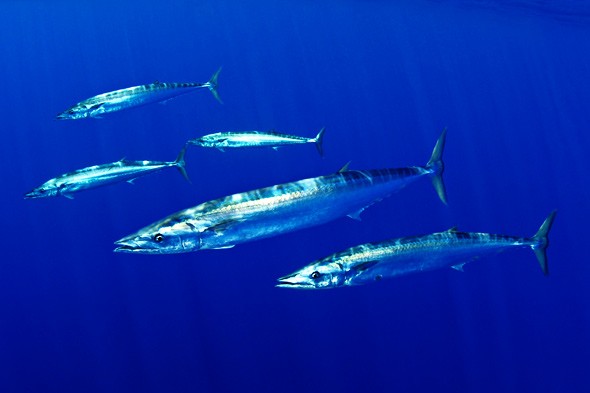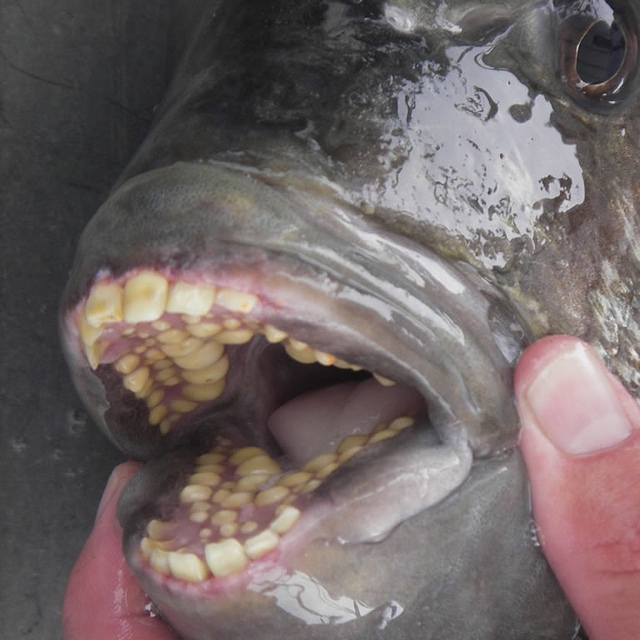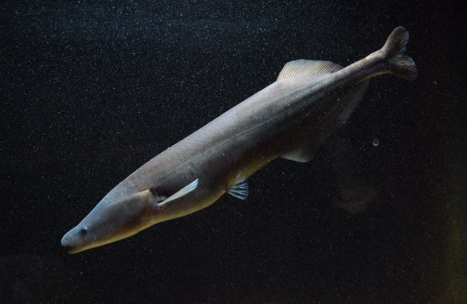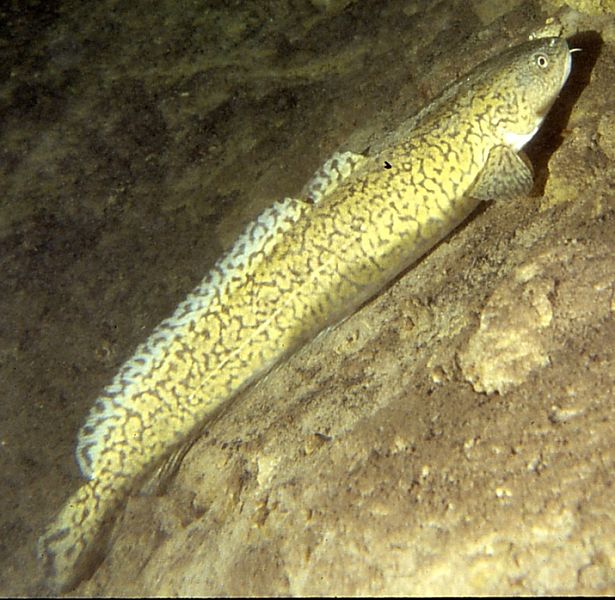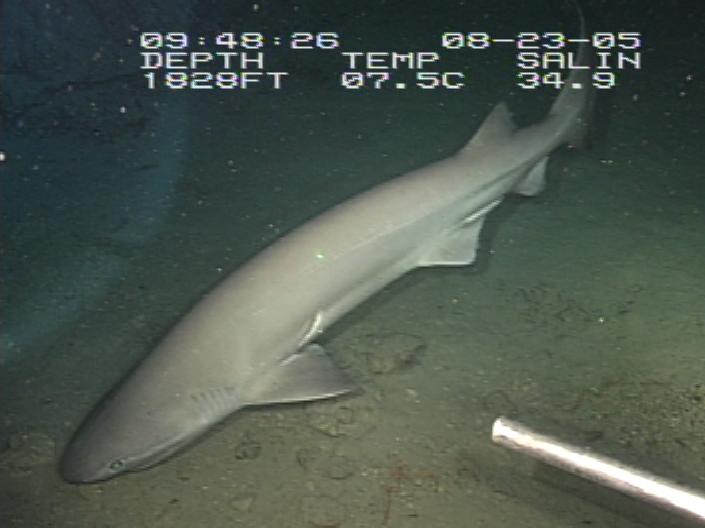Jellyfish, also called sea jelly by some, are marine animals shaped like umbrellas with tentacles that trail behind them. They swim by pulsing their bell-shaped bodies, which propels them along quite nicely, or else they hitch a ride on an ocean current. Their tentacles are armed and ready to sting to capture their prey or defend against predators. Jellyfish are found all over the world, from near the shore to deep in the oceans and seas and even in freshwater ponds and lakes. They can be found in swarms and damage fishing nets, sometimes clogging desalination systems and sources of ocean power.
Here are twenty more fascinating facts that you should know:
- They existed long before the dinosaurs or humans walked the earth. Carbon dating of fossilized jellyfish indicates they have been around as long as 650 million years.
- Each tentacle is armed with cells called cnidoblasts, which contain nematocysts holding coiled threads that are ready to sting. The jellyfish tangles other fish in their tentacles and the pressure from holding them causes the coils to spring open and sting.
- Jellyfish stings are not just effective on prey; they can also injure humans. Many swimmers are stung every year and experience mild discomfort or even death.
- There are more than 2,000 varieties of jellyfish in the world. The variety known as Phialella zappi goldfish is named after Frank Zappa, the US musician and composer.
- Jellyfish range in size from the tip of a pencil eraser to approximately eight feet in diameter, boasting tentacles 200 feet long, which is as long as two blue whales put together.
- The jellyfish’s transparent body, in addition to their tentacles, are its main defense mechanism. Jellyfish can hide very easily thanks to their see-through bodies.
- Even if it gets separated from the jellyfish’s body, the tentacles can still sting. Plus, even a dead jellyfish can sting you.
- The best thing to do for a sting is to get out of the water and wash the wound with salt water, contrary to urban legend. Salt water deactivates the stinging cells. Don’t use plain tap water; this will reactivate the cells and continue the sting. Remove the cells by scraping them out with a credit card.
- Jellyfish have a tube hanging down that acts as both mouth and stomach. Some species have frilly, ruffled arms that guide the food into the tube.
- If they only had a brain, but they don’t; jellyfish have a very basic central nervous system that detects light, vibrations and water changes. This plus a sense of gravity allows the jellyfish to swim and guide itself.
- Jellyfish have no skeleton; their bodies are 95% water.
- Some jellyfish species live at depths of 30,000 feet (9,000 meters) below the surface of the ocean. Most jellyfish prefer warm water, but there are a few species living in the arctic.
- Jellyfish in aquariums live longer than those who live in the ocean because there are no predators. In the wild, jellyfish have a life span of a few hours up to many months, depending on the species.
- Most jellyfish feed on fish, plankton, other jellyfish, crustaceans and fish eggs.
- The list of predators for jellyfish isn’t long, but includes other jellyfish, tuna, sharks, swordfish, sea turtles and certain salmon found in the Pacific ocean.
- People in North America and Europe most often see the moon species of jellyfish. They are typically blue or pink and found in water no more than 20 feet deep. They have a mild sting that usually results in a rash.
- Jellyfish aren’t really fish, they’re plankton, so some scientists and aquariums are trying to popularize the term “sea jellies” or just “jellies” instead of jellyfish. The word jellyfish has been recorded as early as 1707, so it may be a hard habit to break.
- In 1982, jellyfish were introduced into the Black Sea and after eight years, they totaled about 900 million tons because they are such aggressive colonizers. They have caused $350 million in losses to the fishing and tourism industries in the Black Sea.
- A mass of jellyfish is called a swarm, a smack or a bloom.
- Jellyfish are harvested for collagen, which is used to treat rheumatoid arthritis, used in skin treatments and in other practical uses.
Have you ever seen a jellyfish?

